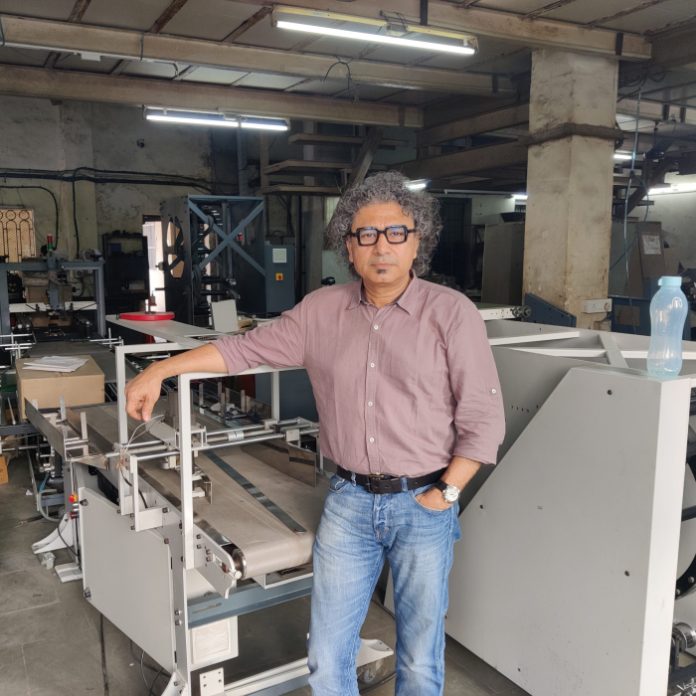The Indian newspaper industry, once marked by robust expansion, is grappling with the challenges of changing consumer behavior and a subdued growth trajectory, says Rajiv Gandotra, the founder of Technicon India, a leading manufacturer of mailroom automation equipment.
Gandotra, who shed light on the industry’s path forward and the crucial strategies that newspapers are adopting to ensure sustainability and profitability, foresees a future characterized by prudent utilization of resources, operational consolidation, and a concerted effort to extract optimal performance from existing machinery.
From 2000 to 2012, the Indian newspaper sector witnessed an impressive surge, marked by the establishment of new production facilities, modernization of machinery, and significant capital investment in new presses and equipment. However, today, the industry is facing changing reader preferences and market dynamics.
“The hardware within the Indian newspaper industry, acquired during its growth phase, is relatively new. With growth slowing down and a more measured outlook prevailing, companies are recognizing the need to optimize their machinery usage. This could entail rationalizing production facilities, divesting certain equipment, and streamlining operations. By doing so, they are poised to achieve a leaner and more profitable operational structure,” explains Gandotra.
Technicon, headquartered in Mumbai, stands at the forefront of mailroom automation, providing innovative solutions to streamline newspaper production processes. It manufactures inserters, overhead newspaper conveyors, counter stackers, under wrappers, plastic bundle wrappers, online sheet under layers, van loading telescopic loaders, flow turns, and log stackers.
The company’s journey began with Malayala Manorama as its first client, and over the years, it has become a trusted partner to major dailies, including The Hindustan Times, The Times of India, DNA, Dainik Bhaskar, and Dainik Jagran, among others. The majority of Technicon’s clientele comprises regional and Indian-language newspapers.
Circulation has recovered from a post-pandemic low
The Indian newspaper industry was struggling with declining readership even before the Covid pandemic hit the world and the Indian economy in early 2020. The pandemic and the first phase of the lockdown dealt a body blow to the already struggling industry as distribution came to a halt in many of the big cities. The 2019-2020 financial year was a virtual washout as both circulation and advertising revenue dropped sharply. Gandotra says circulation has bounced back for most of the newspapers.
“While circulation has shown resilience in the last couple of years, it’s important to acknowledge that the news consumption dynamics have shifted. There is a steady demand for authentic news sources, which sustains the relevance of newspapers. However, growth, as witnessed during the early part of the century, might be less attainable due to these shifts. Newspapers remain a steadfast medium in our country’s diverse landscape, but the industry’s growth has entered a more muted growth phase,” emphasizes Gandotra.
In line with its commitment to innovation and adaptation, Technicon is actively diversifying its offerings to explore avenues beyond the newspaper industry.
Diversifying into newer areas such as packaging and books
Technicon is moving into newer areas to achieve the next phase of growth. The company last year participated in the Printpack show, where it showed new machines developed primarily for the folding cartons segment. These machines automate the post-folding gluing stage.
Technicon has also embarked on a strategic partnership with Bindwel (formerly Welbound), a Mumbai-based player in the bookbinding realm. The collaboration involves the manufacturing and supply of conveyors for Bindwel’s book-binding machines, underscoring Technicon’s proactive approach to seizing growth opportunities beyond its core domain. The company is also working to expand in the security printing industry.
“As I have mentioned, Technicon will continue to work closely with the newspaper industry. There is no doubt about that. But we are also looking at new areas for our next phase of growth. Our focus is now on packaging, books, and the security printing industry,” Gandotra concludes.
















